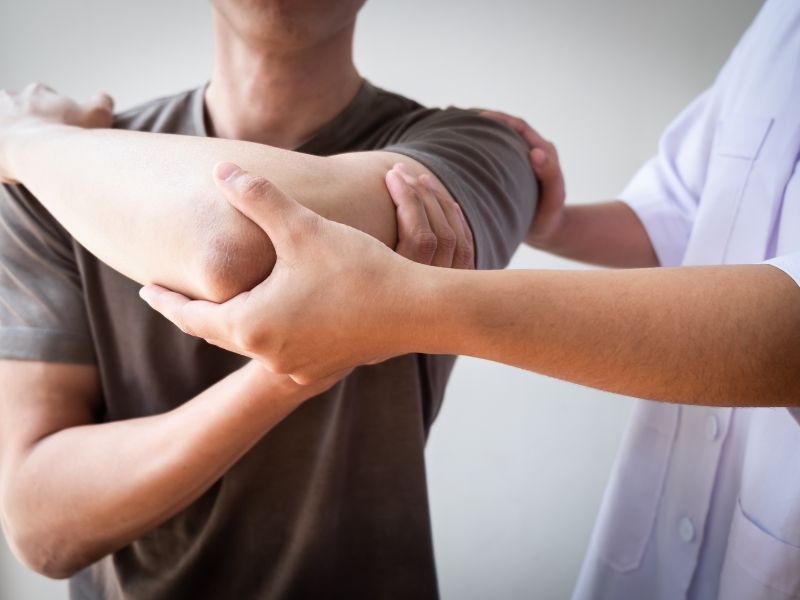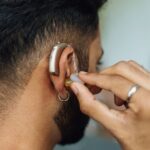Unfortunately, rotator cuff injuries are common and can cause pain, limited mobility, and difficulty performing daily activities. Whether you’ve experienced a rotator cuff tear, strain, or impingement, proper rehabilitation exercises, and therapies play a crucial role in healing and restoring shoulder function. This article will discuss six effective exercises and treatments that can aid in rehabilitating rotator cuff injuries.

Understanding Rotator Cuff Injuries
Before diving into rehabilitation exercises and therapies, it’s important to understand the different types of rotator cuff injuries and their causes. Rotator cuff injuries can occur due to trauma, overuse, or age-related degeneration.
Common injuries include rotator cuff tears, tendinitis, bursitis, and impingement syndrome. These injuries can result from repetitive overhead motions, lifting heavy objects, falls, or aging-related wear and tear.
It’s crucial to consult with a medical professional for an accurate and personalized treatment plan. Rest assured that there are various treatment options for rotator cuff injury to reduce pain, restore shoulder range of motion, strengthen the rotator cuff muscles, and improve functional stability.
It’s important to follow certain guidelines during rehabilitation, such as starting with gentle exercises and gradually progressing to more challenging ones, listening to your body and avoiding activities that cause pain, and seeking guidance from a healthcare professional or physical therapist.
Rehabilitation Exercises
- Pendulum Swings and Wall Climbing
Stand with one hand supporting your non-injured arm on a table. Let your injured arm hang straight down and gently swing it in a circular motion, clockwise and counterclockwise. This exercise helps improve shoulder mobility and relieve stiffness. To start wall climbing, stand facing a wall and place your fingertips against the wall at waist level. Slowly “climb” your fingers up the wall, reaching as high as you comfortably can. Then, slowly descend by moving your fingers back down. This exercise helps improve the range of motion and flexibility.
- External and Internal Rotation with Resistance Band
Attach a resistance band to a stationary object at waist height. Hold the band with your injured arm and stand with your elbow bent at an angle. Slowly rotate your forearm outward against the resistance of the band. This exercise targets the external rotator muscles of the shoulder.
Or, attach a resistance band to a doorknob or other stable object at waist height. Stand sideways to the band and hold it with your injured arm. Keep your elbow bent and slowly rotate your forearm inward against the band’s resistance. This exercise targets the internal rotator muscles of the shoulder. If you are looking for more shoulder exercises then check out this guide on resistance band shoulder exercises.
- Scapular Retraction, Shoulder Flexion, and Abduction
Sit or stand with good posture, squeezing your shoulder blades together as if you’re trying to hold a pencil between them. Hold the squeeze for a few seconds and then release. This exercise helps strengthen the muscles stabilizing the scapula (shoulder blade).
For shoulder flexion, stand tall with your arms at your sides. Slowly raise your injured arm forward and upward, reaching overhead. Pause for a moment and then lower your arm back down. Start with a comfortable range of motion and gradually increase as tolerated.
For shoulder abduction, start with your arms at your sides, then slowly raise your injured arm to the side and upward, keeping your elbow slightly bent. Pause at the top and then lower your arm back down. Again, start with a comfortable range of motion and gradually increase as tolerated.
Related Posts

Therapies for Rotator Cuff Injuries
- Physical and Massage Therapy
Working with a skilled physical therapist can provide targeted exercises, manual therapy techniques, and guidance throughout the rehabilitation process. They can tailor a plan specific to your injury and monitor your progress. On the other hand, massage therapy alleviates muscle tension, reduces pain, and improves circulation in the shoulder area. It can particularly benefit individuals with tight and knotted muscles surrounding the rotator cuff.
- Cold and Heat Therapy
Applying cold packs or ice to the injured shoulder can help reduce inflammation, swelling, and pain. Cold therapy can be used after exercises or as needed throughout the day. Similarly, applying heat to the shoulder can help relax the muscles and promote healing. Heat therapy is beneficial before rehabilitation exercises to strengthen muscles and improve flexibility.
- Ultrasound Therapy or Electrical Stimulation
Ultrasound therapy uses high-frequency sound waves to stimulate deep tissues, promote blood flow, and reduce inflammation. It can be an effective adjunct to other treatments for rotator cuff injuries. On the other hand, electrical stimulation therapy involves using low-level electrical currents to stimulate muscles around the rotator cuff. It can help reduce pain, improve muscle strength, and enhance healing.
Rotator cuff injuries are painful and debilitating, but healing and recovery are possible with the right approach to rehabilitation. Remember, rehabilitation for rotator cuff injuries is a journey that requires dedication, guidance, and perseverance. With the right exercises, therapies, and professional support, individuals can regain strength, mobility, and function in their shoulders, allowing them to return to normal activities and enjoy a pain-free life.




